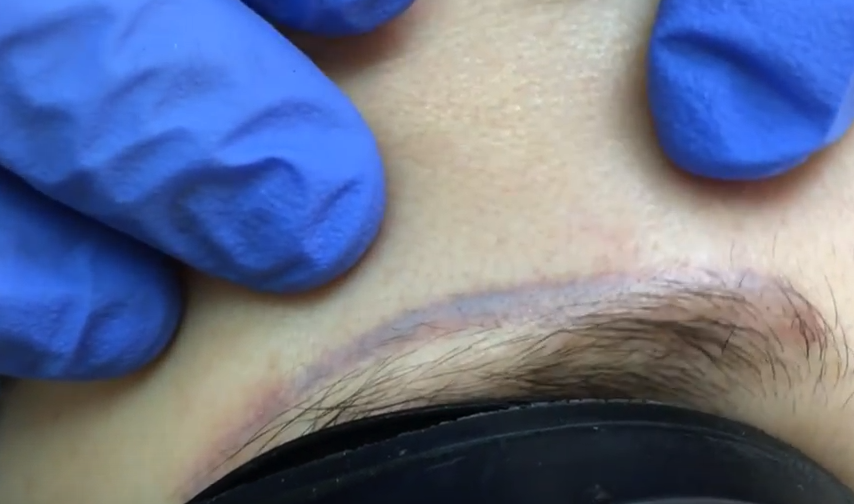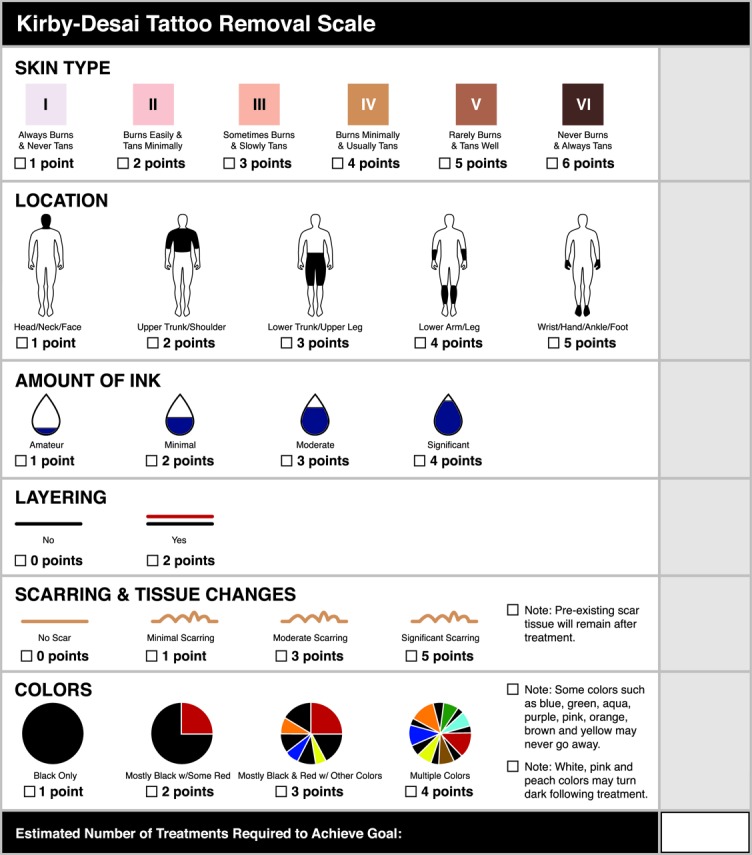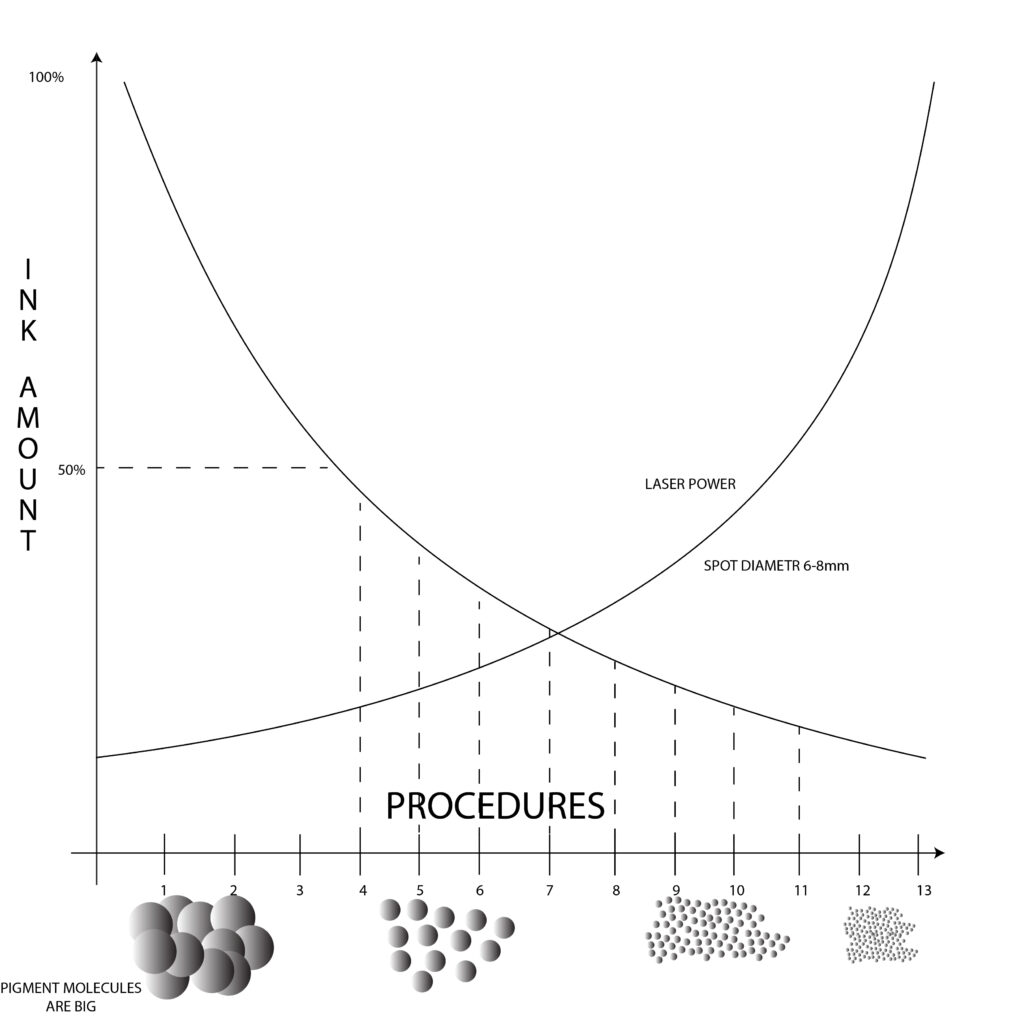Affecting Factors to the Laser Removal Procedure. 6
In this lesson, we will talk about the factors that affect the effectiveness of laser tattoo and permanent makeup removal. And how to predict the result to announce it to the client.
So
- Laser dependent factors – this is what depends on your laser.
— device quality.
— pump lamp life/wear (the pump lamp has a life of 1 million – 1.5 million flashes; this is considered a good lamp). The lamp wears out like this: the first 100-150 thousand flashes of the lamp will be of increased power, that is, when the laser is new, it is quite aggressive. Approximately after this number of flashes, the power is reduced to stable for this device. This stability can hold from 500,000 flashes to 1-1.5 million, it all depends on the quality. Then the power will slowly begin to decline and it’s time to think about replacing the laser with a new one. All lasers, in addition to setting the power and speed of the pulse, have a counter for the number of flashes, so you can easily track it.
— the choice of wavelengths – 1064nm / 532 nm. Often the wrong choice of wavelength also affects the efficiency of removal. If you choose a wavelength of 1064nm for red, then, of course, you will not get a good result. For red shades – 532nm, for dark – 1064nm.
— power and focus – here we are looking for the golden mean and should get the optimal spot 6-8 mm and moderate skin whitening.
-These are the moments that depend on your laser equipment.
- Pigment dependent factors – this is what the client comes to you with.
There are two points, more related to tattoos: amateur and professional tattoos. You have to work with them in different ways.
Characteristics of amateur tattoos:
Non-specialized pigment (ink, gel pen, gouache, etc.) all these pigments are not specialized for tattooing. They have a large particle size, this is not done by professional machines and needles. Usually, the pigment lies loosely and unevenly in the skin. Such tattoos are usually removed more easily and last 6-8 sessions to complete removal.
Professional tattoos are usually made by professional tattoo pigments Intenze, Mom, etc.
These are fine pigments, professional machines, and needles. Everything fits tightly, large volume, bright tattoo. The removal of such tattoos will require 10-15 sessions. It can be removed in 2-3 sessions, but only with the consequences of scarring when the skin is burned.
In relation to permanent makeup, the difference is mainly in the technique of application. Because modern application techniques involve less pigment and easier application. Also, the blood supply to the skin of the face is much better than the skin on the body. The face is more exposed to ultraviolet light. Therefore, in combination with these factors, permanent makeup will be removed much faster than a tattoo on the body.
Another small secret is that there is no big difference between tattoo pigments and permanent ones, there is more marketing here because it is easier for people to buy permanent pigments for permanent makeup, or tattoo pigments for the tattoo. The differences are only in concentration, and they contain the same dyes. Permanent makeup pigments are more diluted. All manufacturers of coloring pigments have a Color Index that should indicate the pigments to understand what is used as a dye, and if you compare permanent makeup pigments and tattoo pigments then the composition will be approximately the same with small differences.
Another point, the larger the area of the tattoo, the less likely it is to remove it to clear skin.
Usually, it takes about 10 treatments to remove 85% of a tattoo, and about 5 more treatments are needed to remove the remaining 15%. This is a global statistics.
Let’s talk about
- Tissue factors – this is what depends on our body.
— age and lifestyle. The process of removing pigments is also affected by age because in young people the process of skin renewal is faster. The younger the client, the faster we remove the tattoo. In the older group of clients, the immune system is weaker, the processes in the tissues are slower, which affects the duration of tattoo removal.
— skin type. Dry, normal and oily. Oily skin is best for us. Dry and normal types will clear slowly. Oily skin will be cleared faster. This all applies to the face. That is, if a client comes to you with dry or normal skin, warn him that the cleansing process will take place a little longer. As for the skin on the body. The thicker the skin on the body, the faster it will be cleared.
— the location of the tattoo. In the upper part of the body (shoulders, arms, head) the rate of metabolic processes and blood supply is 2 times higher than in the lower part of the body. Accordingly, the speed of cleansing the skin in the upper body will be higher.
— the presence of scars. Scar tissue as a result of injury during the application of permanent makeup or non-professional laser removal complicates further removal of pigment from the skin compared to unchanged tissue.

The photo above shows a scar after poor-quality laser removal.
If you see scars on the skin during the initial reception, be sure to inform the client about it. This is necessary in order to avoid further conflict, as well as to warn that removing the pigment on the scars will take longer.
— immune system. The presence of a good immune response has a significant impact on the effectiveness of the laser removal procedure. People with immunodeficiency resulted from taking drugs (glucocorticosteroids, azathioprine, cyclophosphamide, etc.) prescribed for various diseases, the results of laser removal will be much weaker due to the reduced activity of tissue macrophages.

There is a very convenient table to predict the number of sessions needed for removal.
Forecasting includes 6 parameters by which you can calculate the number of sessions for tattoo removal. You choose which item your customer belongs to and indicate the number on the right in the cell. As a result, add up all these points and get the number of sessions for tattoo removal. But keep in mind that this is still not an exact figure, maybe plus or minus 2-3 procedures.
Let’s look at the points
1.

Skin type, the darker the skin is the more laser removal procedures will be required.
2.

The location of the tattoo or permanent makeup. We have already discussed the areas where the tattoo is removed faster and longer.
3.

The amount of ink in the skin.
4.

The number of layers. If the tattoo is in one layer, then this is 0 points, 2 or more than 2 points.
5.

The scarring of the skin, the more scars, the more procedures.
6.

And, accordingly, the pigment colors, the more different colors, the greater the number of removal sessions required.
Another important moment. How much time before removal should pass after applying a tattoo or permanent makeup.
We remember that cleansing the epidermis after applying a tattoo or permanent makeup goes from 30 to 60 days depending on age, etc. Therefore, no need to take up the tattoo removal until the moment of complete purification of the tattoo or permanent makeup.
Because after the healing, there will be less pigment in the skin than with the work just done.
Also, a common question is how to treat the skin after laser removal – the answer is you don’t need it.
I apply ice after the removal procedure and recommend cooling for 1-1.5 hours in order to remove the edema. If there is no skin injury during the removal, then no care is required.
When can you tint the eyebrows with henna or dye? You can tint them as soon as the swelling has gone, but I recommend my customers to dye the next day after the removal procedure because they may have an allergic reaction to henna or dye and it will not be very good if it is added to the edema after removal.
This graph shows how the removal efficiency decreases with the number of sessions. In the first 3-4 sessions, you can get the effect of removing up to 50% because the pigment granules are quite large and can be easily removed with a laser. Then the effect decreases and we can compensate for this by increasing the laser power.

As for the contraindications, I will make access to the agreement file-consent to the laser removal procedure. You can take it as a basis and alter it to suit your requirements. The contract specifies all contraindications.
